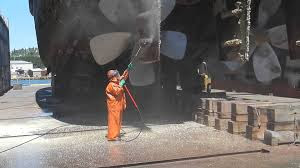Make Cumorah Great Again – November 2016
Brexit.
Trump.
Next stop: LDS scholars who reject our prophets and apostles on the location of Cumorah.
______________
I’m kidding, a little. But there is an important point here.
I do think it’s time to Make Cumorah Great Again.
For too long, LDS scholars and educators have managed to cast doubt on our prophets and apostles, beginning with Joseph and Oliver, over this simple issue of the Hill Cumorah. Their influence, which I call Mesomania, has infiltrated Church art and media and education, to the point where, sadly, many LDS people can’t unsee Mesoamerica when they read and think about the Book of Mormon.
I’ve tried in as many ways as I can think of to explain this issue.
I’ve traced the intellectual history, showing that it was not irrational to move Cumorah from New York to southern Mexico. Except that to do so, the scholars had to repudiate the prophets.
I’ve addressed the specific arguments made by LDS scholars and educators who established and continue to promote the two-Cumorahs theory.
I’ve shown that Joseph and Oliver were consistent and persistent on the location of Cumorah (meaning the Mormon 6:6 Cumorah), as were every one of their contemporaries.
I’ve shown that the effort of scholars to link the New York Cumorah with the hemispheric model doesn’t hold up.
I’ve shown that the scholars’ rhetorical arguments based on the text are circular arguments designed solely to justify their predetermined conclusion that the Book of Mormon took place in a limited area of Mesoamerica.
I’ve shown that the articles and books purporting to cite archaeology were flawed and misrepresented the actual archaeological evidence.
I’ve shown how Joseph Fielding Smith’s prophetic warning about the two-Cumorahs theory has been vindicated by what’s happening right now.
If I’ve missed any arguments or evidence, I’d like to know about them.
______________
I remain optimistic that at least some LDS scholars and educators will change their views about Cumorah. In the meantime, every member of the Church should realize that any theory of geography that puts Cumorah somewhere other than New York is contradicting every prophet and apostle who has spoken on this issue.
Source: Book of Mormon Wars

